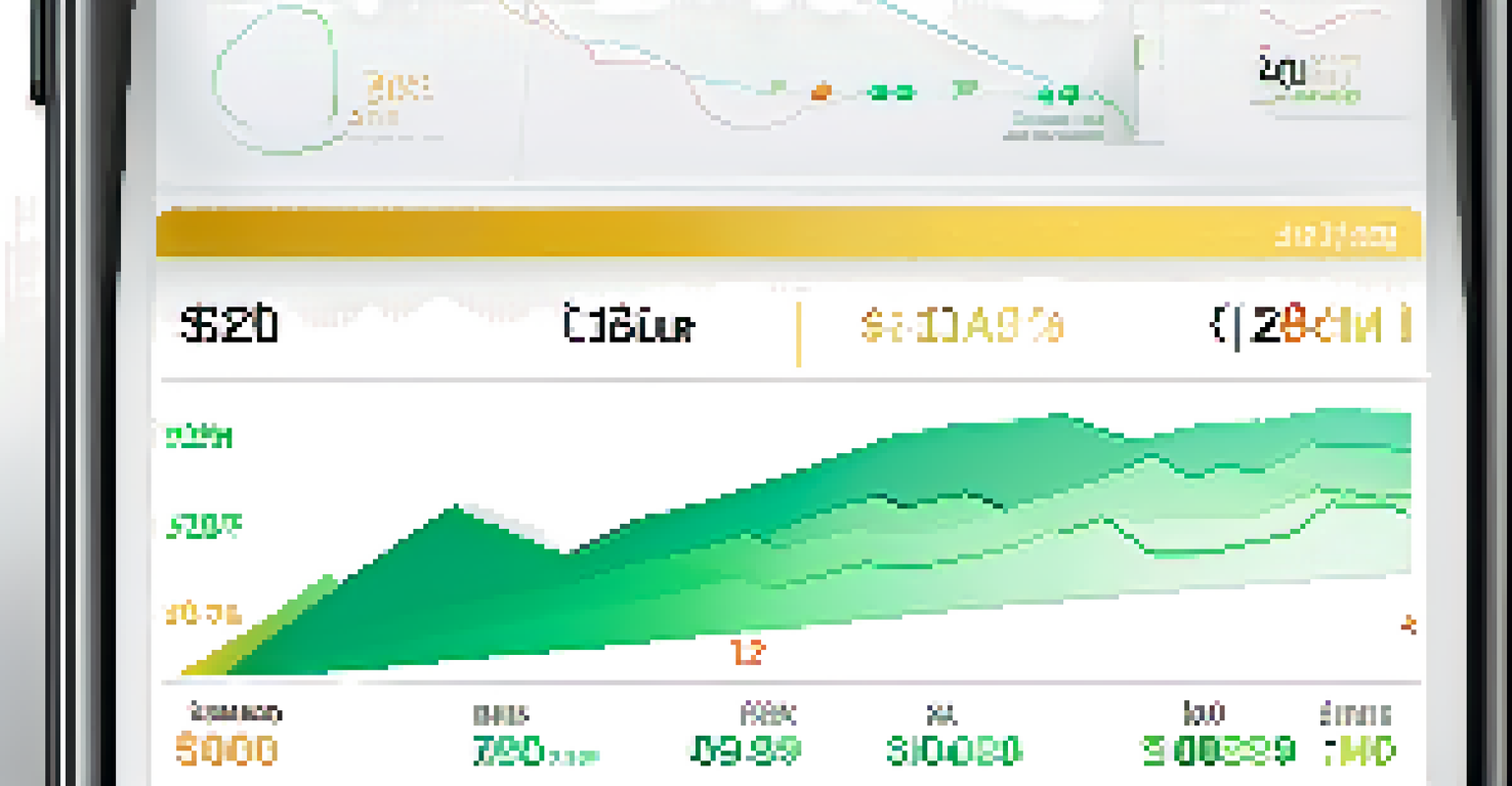Market Sentiment: Its Influence on Crypto Price Volatility

What is Market Sentiment in the Crypto World?
Market sentiment refers to the overall attitude of investors toward a particular asset or market. In the context of cryptocurrency, it captures how traders feel about coins like Bitcoin or Ethereum, influenced by news, social media, and market trends. This collective feeling can sway prices significantly, sometimes leading to dramatic rises or falls.
In investing, what is comfortable is rarely profitable.
Think of market sentiment as the mood of a crowd at a concert. If the crowd is excited and cheering, the energy lifts the performance, causing everyone to feel positive. Conversely, if the crowd is anxious or bored, the atmosphere can quickly dampen spirits, leading to a lackluster performance. Similarly, in crypto, positive news can create a buying frenzy, while negative news can lead to panic selling.
Understanding market sentiment can help investors make informed decisions. By keeping an eye on social media trends, news articles, and community discussions, traders can gauge whether the market is feeling bullish (optimistic) or bearish (pessimistic), which can directly impact their strategies.
Factors Influencing Market Sentiment in Crypto
Several factors can influence market sentiment, including news events, regulatory changes, and technological advancements. For example, a major exchange hack can lead to fear, resulting in a sharp decline in prices. Similarly, positive developments, like a new partnership or technological breakthrough, can spark excitement and drive prices upward.

Consider the example of Bitcoin's price surge following endorsements from high-profile investors. When influential figures express confidence in a cryptocurrency, it can create a ripple effect, encouraging others to invest. This phenomenon highlights how market sentiment can be heavily swayed by public figures and media coverage.
Market Sentiment Drives Prices
The collective feelings of investors significantly influence cryptocurrency prices, often leading to dramatic market shifts.
Moreover, social media platforms like Twitter and Reddit play a significant role in shaping sentiment. The viral nature of posts can quickly elevate a coin's visibility, leading to a surge in interest and investment, or conversely, spreading fear and uncertainty.
The Role of Fear and Greed in Crypto Prices
Fear and greed are two powerful emotions that drive market sentiment in cryptocurrencies. The Fear and Greed Index, often used by traders, gauges the market’s emotional state based on various indicators, helping investors understand when to buy or sell based on prevailing sentiment. When the index shows extreme greed, it may signal that prices are overinflated, while extreme fear suggests potential bargains.
Market sentiment is the real driver of price movements in cryptocurrencies, often more so than fundamental factors.
Imagine a game of musical chairs; when the music is playing (greed), everyone is eager to grab a chair (or invest). But when the music stops suddenly (fear), people scramble to exit, often leading to chaos. This analogy reflects how quickly emotions can shift in the crypto market, resulting in price volatility.
Understanding how fear and greed impact decision-making can help investors navigate the tumultuous waters of cryptocurrency. By recognizing these emotional triggers, traders can make more rational decisions rather than succumbing to the whims of the market.
The Impact of Social Media on Market Sentiment
Social media platforms have revolutionized the way information spreads, significantly impacting market sentiment. A single tweet from a prominent figure can send prices soaring or plummeting within minutes. This immediacy highlights the volatile nature of crypto markets, where public sentiment can shift rapidly based on online chatter.
For instance, the infamous Dogecoin surge was largely fueled by social media hype, showcasing how collective enthusiasm can lead to massive price increases. When users rally around a coin and share positive sentiments, it can create a self-fulfilling prophecy, driving prices higher as more people jump on the bandwagon.
Fear and Greed Fuel Volatility
Emotional responses, particularly fear and greed, play a crucial role in the unpredictable nature of crypto price movements.
However, social media can also spread misinformation, leading to panic selling. Investors must navigate this landscape carefully, discerning credible information from hype, to avoid making impulsive decisions based on fleeting trends.
How Market Sentiment Drives Price Volatility
Market sentiment is a significant driver of price volatility in cryptocurrencies, often causing unexpected price swings. Unlike traditional markets, which may have more stable fundamentals, crypto prices can fluctuate wildly based on sentiment alone. This volatility can be both an opportunity and a risk for investors, depending on their strategies.
Consider the rollercoaster ride of Bitcoin's price over the years. Sharp increases often follow waves of positive sentiment, while sudden drops can result from negative news or shifts in public perception. This unpredictability makes understanding sentiment crucial for anyone involved in crypto trading.
As a result, investors often find themselves trying to predict sentiment shifts to capitalize on price movements. This anticipatory behavior can amplify volatility, as traders react to perceived changes in sentiment, further driving the price in either direction.
Strategies for Navigating Market Sentiment
To successfully navigate the influence of market sentiment, investors should adopt a few strategies. First, staying informed through reliable news sources and market analysis can help traders anticipate sentiment shifts. This proactive approach allows investors to make decisions based on facts rather than emotions.
Additionally, utilizing tools like sentiment analysis can provide insights into market trends. By analyzing social media mentions, news articles, and community discussions, traders can gain a clearer picture of prevailing sentiment, helping them make more informed investment choices.
Social Media Shapes Market Trends
Platforms like Twitter and Reddit can rapidly sway market sentiment, making them powerful tools in the cryptocurrency landscape.
Lastly, diversifying investments can mitigate the risks associated with sentiment-driven volatility. By spreading investments across different assets, traders can reduce the impact of sudden price swings, allowing for a more stable investment approach.
The Future of Market Sentiment and Crypto Trading
As cryptocurrencies continue to evolve, the influence of market sentiment is likely to grow. With the increasing integration of technology and social media into trading practices, understanding sentiment will be crucial for investors. Market analysts predict that sophisticated tools for sentiment analysis will become more prevalent, helping traders navigate the complexities of crypto markets.
Moreover, as regulatory frameworks around cryptocurrencies develop, sentiment may stabilize over time. A more regulated environment could lead to a more rational approach to trading, reducing the emotional volatility currently seen in the market.

Ultimately, the future of market sentiment in crypto trading will hinge on how investors adapt to changing technologies and market dynamics. By staying informed and embracing new tools, traders can position themselves for success in this rapidly evolving landscape.